
- Disneyland® Paris Tickets
- Eiffel Tower Tickets
- Louvre Museum Tickets
- Paris Catacombs Tour & Tickets
- Versailles Tickets
- Notre-Dame Paris Tickets
- Orsay Museum Tickets
- Paris Pantheon Tickets
- Arc De Triomphe Tickets
- Opera Garnier Paris Tickets
- Centre Pompidou Tickets
- Big Bus Paris Hop-on Hop-off Tours
- Parc Astérix Paris Tickets
- Sainte Chapelle Tickets
- Les Invalides Tickets
- Eurail Passes
- Musee de l'Orangerie Tickets
The Architectural Marvels of Chateau de Chantilly
Knowledge Graph
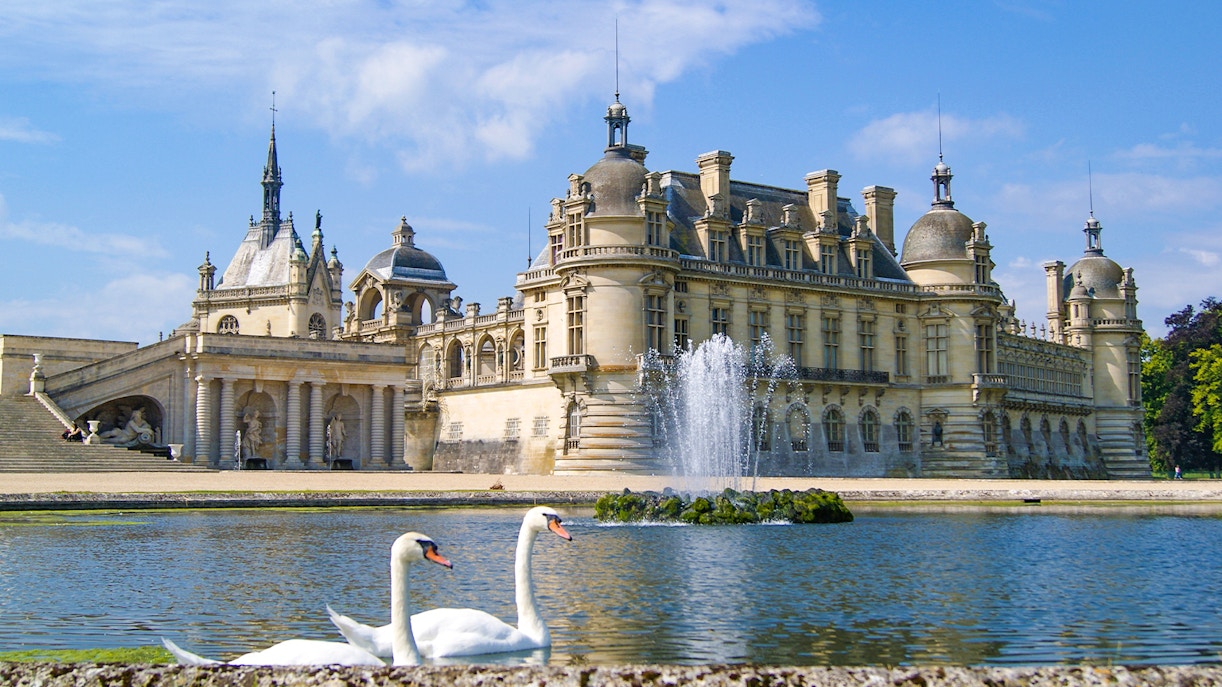
Official Name: Château de Chantilly
Function: Castle, Historic Site, and Museum
Location: 7 Rue du Connétable, 60500 Chantilly, France
Founded: Originally built in the 14th century, with significant reconstructions in the 16th and 19th centuries
Area: The entire estate is around 7,800 hectares, with the château situated on a 115-acre park
Architectural Style: French Renaissance
Main Architects: Pierre Chambiges (original construction), Jean Bullant (Renaissance reconstruction), Honoré Daumet (19th-century reconstruction)
Chateau de Chantilly FactsWho Designed Chateau de Chantilly?
Introducing the creative minds whose architectural brilliance and vision led to the enchanting creation, the Château de Chantilly!
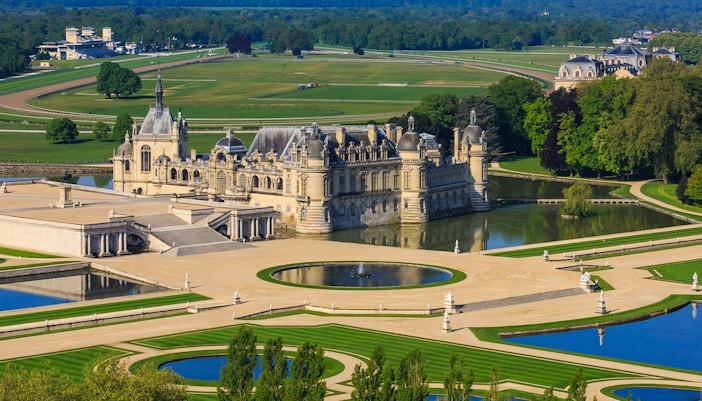
Pierre Chambiges
Pierre Chambiges, a renowned architect, left an indelible mark on Chateau de Chantilly during the 16th century. His architectural genius brought forth the initial construction of the chateau, setting the stage for its future grandeur. Chambiges' designs seamlessly blended French Renaissance elements with meticulous craftsmanship, creating a magnificent mansion for Anne de Montmorency. His contribution to Chantilly's architectural heritage can be seen in the chateau's elegant proportions, intricate details, and timeless beauty, solidifying Chambiges' legacy as a master architect of his time.
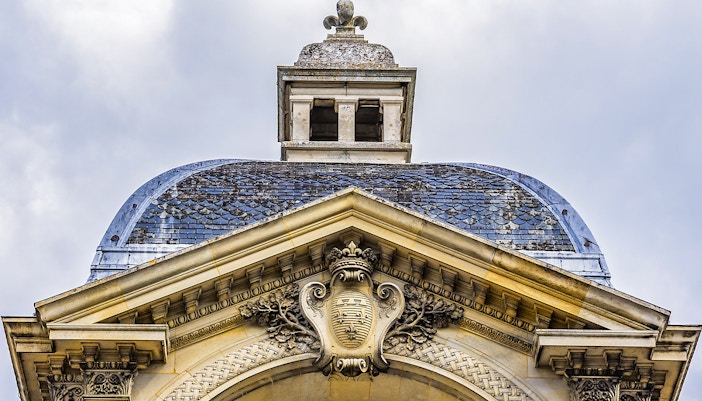
Jean Bullant
Jean Bullant, an esteemed architect, played a pivotal role in the construction of Chateau de Chantilly. His innovative designs and meticulous attention to detail are evident in the Petit Chateau, a magnificent addition to the estate. Bullant's work showcased his mastery of French Renaissance architecture, incorporating harmonious proportions, intricate ornamentation, and a sense of refined elegance. His contributions to Chantilly's architectural legacy have left an indelible mark, making the chateau a true testament to his talent and skill.
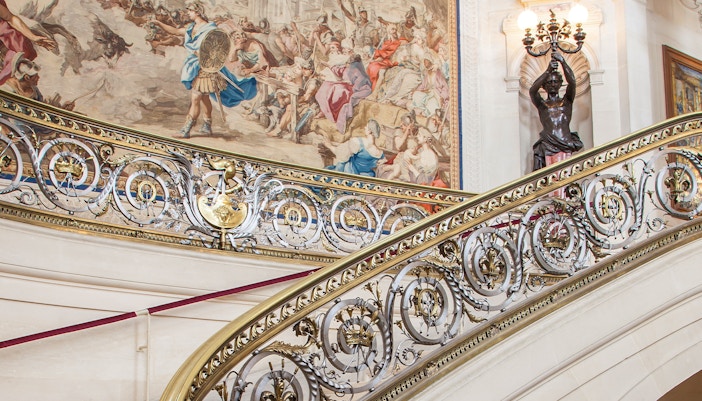
Honoré Daumet
Honoré Daumet, a prominent French architect of the 19th century, made significant contributions to the restoration and reconstruction of Chateau de Chantilly in the 19th century. His expertise and vision breathed new life into the chateau, preserving its historical significance while adding modern elements. Daumet's work is seamlessly integrated with the existing structures, creating a harmonious blend of old and new. His architectural prowess can be seen in his meticulous attention to detail, refined aesthetics, and careful restoration of the chateau's grandeur.
Structure of Chateau de Chantilly

Facades
Richly adorned with intricate stonework and lavish decorations, the château's elegant facades captivate onlookers with exquisite craftsmanship and symmetrical designs. Tall windows and grand arches further accentuate the château's grandeur.
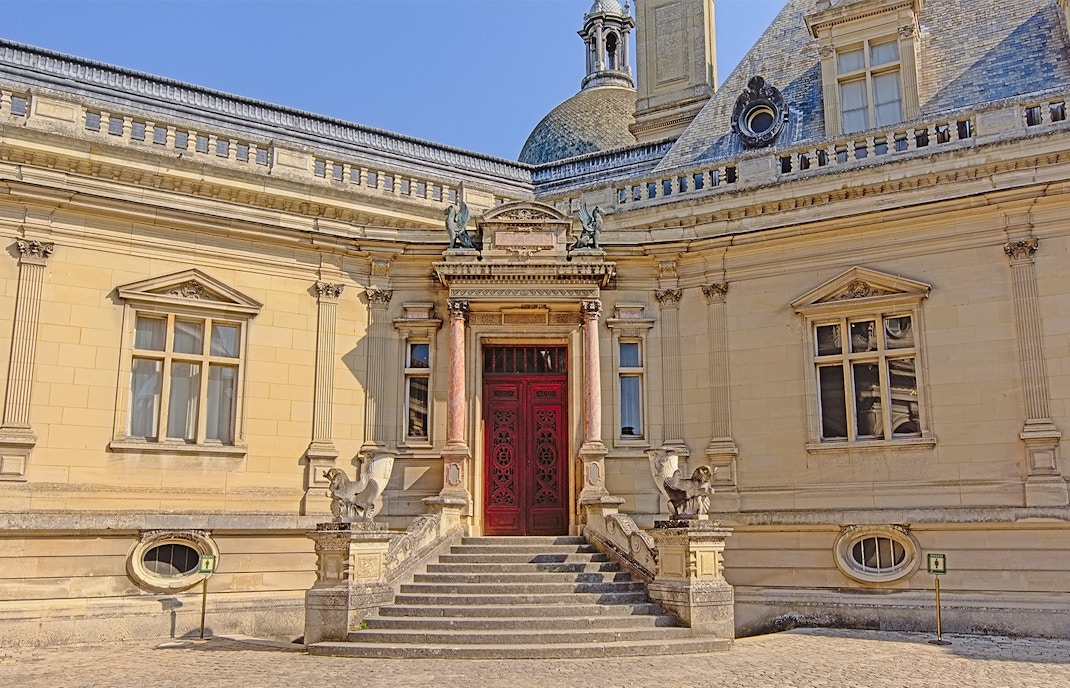
Doorways
Each doorway features elaborate carvings and sculptures, embodying the elegance and extravagance of French nobility. Intricate ironwork adorns the doors, hinting at the luxurious embellishments that await inside the château.
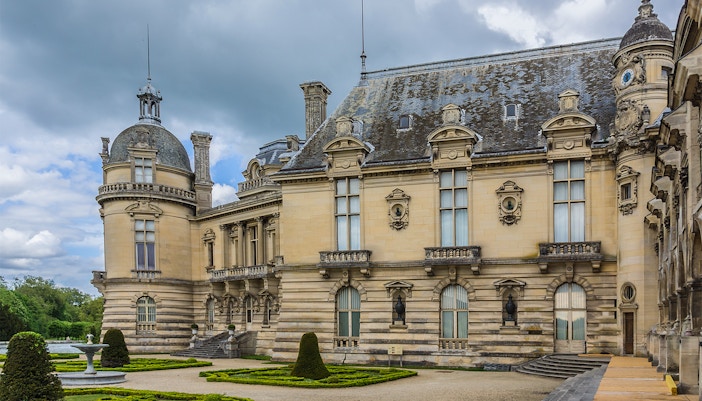
Towers
Chateau de Chantilly features several prominent towers that dominate its skyline, remnants of the original 14th-century structure. These towers showcase unique architectural elements, such as turrets and pinnacles, and serve as a testament to the château's storied past as a fortified castle.
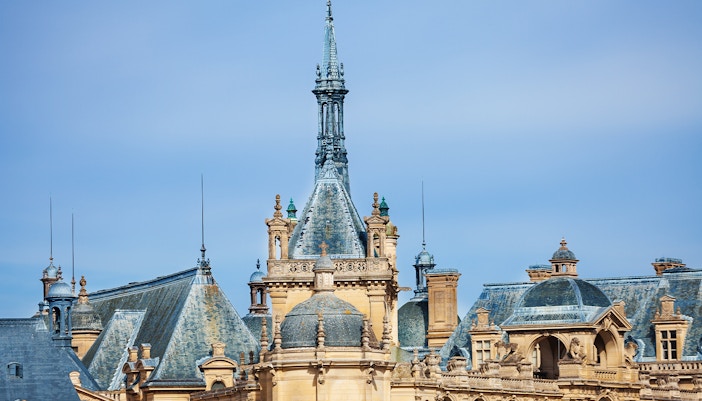
Spires
Graceful spires can be found atop the château's towers and other architectural features, showcasing the creativity and ingenuity of its architects, all the while evoking a sense of grandeur and sophistication.

Domes
While domes are not as prominent in Chateau de Chantilly's exterior design, their intricate details and motifs still add sophistication and elegance to the estate, highlighting the château's diverse architectural influences and prowess.
Visit Chateau de Chantilly
Frequently Asked Questions about Chateau de Chantilly Architecture
Chateau de Chantilly showcases a mix of Renaissance, Baroque, and Rococo styles.
Pierre Chambiges (original construction), Jean Bullant (16th-century reconstruction) and Honoré Daumet (19th-century reconstruction) were the main architects of Chateau de Chantilly.
Its blend of architectural styles and exquisite craftsmanship makes it a distinct masterpiece in French architecture.
Highlights of Chateau de Chantilly include intricate stonework, cascading staircases, grand arches, and opulent interiors.
The original structure of the chateau dates back to the mid 13th century as a fortified castle.
The estate covers around 7,800 hectares, with the chateau situated on a 115-acre park.
Honoré Daumet's 19th-century reconstruction incorporated Baroque elements while adhering to the chateau's Renaissance roots.
Le Nôtre was responsible for redesigning the chateau's gardens following his work at Versailles.
Visitors should attend the Grand Salon, Library and Archives, Art Gallery, State Apartments, and Chapel at Chateau de Chantilly.